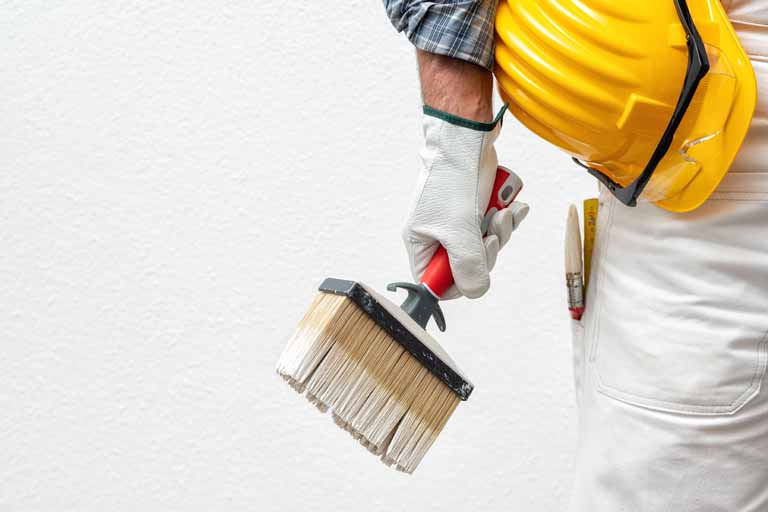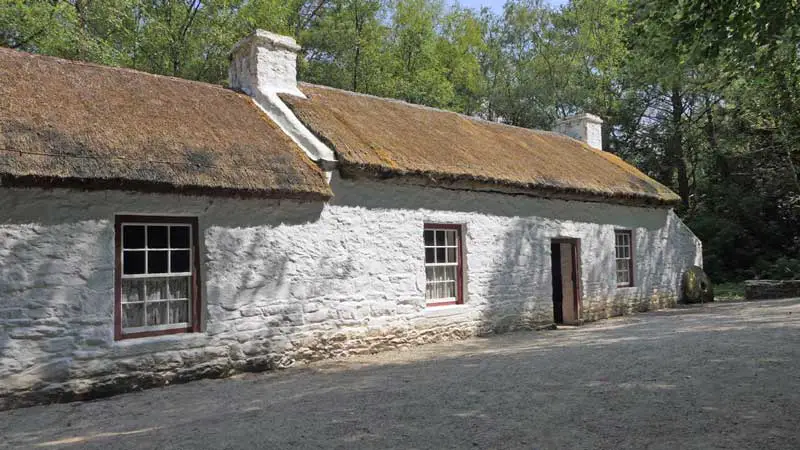
If you’re considering using limewash paint for your walls, you may wonder if it needs to be sealed. Limewash is a mineral-based paint that creates a unique texture and depth to walls. It’s been gaining popularity recently due to its eco-friendliness and aesthetic appeal. So, does limewash require sealing?
One of the benefits of limewash is that it’s breathable, allowing moisture to escape from the walls. This is important because it helps prevent mould and mildew growth. However, if you seal limewash paint, it can no longer breathe, which can lead to problems down the line. So, the short answer is that limewash paint does not need to be sealed, but this rule can have some exceptions.
What is Limewash Paint?
If you’re looking for an eco-friendly, non-toxic, and breathable paint option, then limewash paint could be the perfect choice. Limewash is made from natural pigments, water and hydrated lime. This gives it a high pH level and a unique look and texture that can add depth and character to your walls.
Limewash has been used for centuries and is often associated with historic buildings. However, it has become more popular as a modern interior design choice in recent years due to its unique aesthetic and eco-friendly properties.
One of the benefits of limewash paint is that it is suitable for use on porous surfaces, such as brick, stone, and plaster. The paint soaks into the surface, creating a strong bond, which makes it more durable and long-lasting. Additionally, limewash has a natural texture that can add depth and character to your walls. This is why it’s often used to create a rustic or aged look.
Another advantage of limewash paint is that it is breathable, allowing moisture to escape from the wall without causing damage. This can help to prevent issues such as mould and dampness, which can be a problem in some homes.
In summary, limewash is a natural, eco-friendly, and breathable paint option that adds texture and character to your walls. It is suitable for use on porous surfaces and has a unique aesthetic perfect for creating a rustic or aged look.
Related article: What is Limewash? An Overview of This Traditional Paint
Does Limewash Paint Need to be Sealed?
When it comes to limewash paint, one of the most common questions people ask is whether or not it needs to be sealed. The short answer is no; limewash should not be sealed. This is because limewash is a natural, breathable material. Sealing it can lead to trapped water and other issues, especially in old buildings requiring good breathability.
Another benefit of limewash is that it is bacteria-resistant, antifungal, antiseptic, and hypoallergenic, making it an excellent choice for living rooms, bedrooms, kitchens, and bathrooms. However, it is important to note that limewash should not be used in areas exposed to high moisture levels, such as in showers or around sinks. You’d be better off tiling areas exposed to running water, like in a shower cubicle.
When it comes to heritage buildings, limewash is often the preferred choice for restoration projects. This is because it is a traditional material that is beautiful and durable. These old buildings were built with breathability in mind, so using modern waterproof paints can cause significant damage.
Generally, if your house was built before 1930 in the UK, you should use breathable paints, mortars and plasters to avoid any issues with trapped water. These homes were more than likely built using lime-based mortars, plasters, renders and paint. Restoring them with lime building materials will restore the building to its original beauty. It also protects them from trapped water and other issues caused by using modern materials on old buildings.
In summary, limewash should not be sealed as it is a naturally breathable material. Using sealant can lead to issues with trapped water, damp, mould and condensation. Limewash is an excellent choice for living rooms, bedrooms, kitchens, and bathrooms but should not be used in areas exposed to high moisture levels.
Related article: Does Limewash Wash Off in Rain? Everything You Need to Know

Alternatives to Sealing Limewash
If you want to protect your limewash paint without sealing it, you can consider a couple of alternatives. These alternatives will help improve the water-shedding ability of the limewash paint while maintaining its breathability. This can be useful for areas exposed to harsh weather conditions.
One option is to add raw linseed oil to the limewash mixture. This will improve the water-shedding ability of the paint, making it more resistant to water. Usually, a 1% solution will be appropriate, so for every 10 litres of limewash, add 100ml of raw linseed oil.
After adding and very thoroughly mixing, you should do a small test patch. Allow this area to fully dry and carbonate (around 24 hours). After, test the limewash to see if it dusts, has adhered well, is resistant to water splashes and can be wiped without coming off. If you aren’t happy with any of these attributes, I’d advise contacting your local specialist lime supplier. They should be able to help with your specific project.
Tallow, an animal fat, can also be added to achieve the same results as linseed oil and was the traditionally used fat for this purpose. I would recommend using linseed oil as it’s easier and doesn’t lead to the potential mould growth that tallow can (additional additives are sometimes required to prevent this growth).
Overall, there are alternatives to sealing limewash paint that can help improve its water-shedding ability while maintaining its breathability. By considering these alternatives, you can protect your limewash paint without compromising its performance.
Limewash Paint vs Whitewash
If you’re considering giving your walls a fresh look, you might wonder whether to go for limewash or whitewash. Here’s a breakdown of the differences between the two:
Ingredients
Modern whitewash is typically made from white latex paint and water. On the other hand, limewash is made from lime putty mixed with water and natural pigments. Confusingly, white limewash can be used as a ‘whitewash’.
Traditionally, before the advent of modern paints, white limewash was whitewash. Poor quality cheap whitewash was used in farming to help sanitise cow barns and the general farmyard. Higher-quality white limewash was used on residential buildings as a whitewash.
As modern paints were developed, whitewash was made with more synthetic materials instead of lime. This was when the two paints became different. While white limewash can still be used as a whitewash, modern whitewashes have mostly taken their place.
Texture and Depth
Both limewash and whitewash can create a textured, aged look on walls. However, limewash tends to have a wider range of colours due to the use of natural pigments. Whitewash, on the other hand, can create a bolder, more uniform look.
Related article: Whitewash vs Limewash: Understanding the Key Differences
Conclusion
Limewash paint is a natural, eco-friendly, and breathable option that adds texture and character to your walls. It is suitable for use on porous surfaces and has a unique aesthetic perfect for creating a rustic or aged look.
Limewash paint does not need to be sealed, as it is a naturally breathable material. Sealing it can lead to issues with trapped water, damp, mould, and condensation. Limewash is an excellent choice for living rooms, bedrooms, kitchens, and bathrooms. But it should not be used in areas exposed to high moisture levels, such as in a shower.
There are alternatives to sealing limewash paint. They can help improve its water-shedding ability while maintaining its breathability, such as adding raw linseed oil or tallow. Limewash and whitewash are two different types of paints. Limewash has a wider range of colours due to the use of natural pigments, while whitewash can create a bolder, more uniform look.

